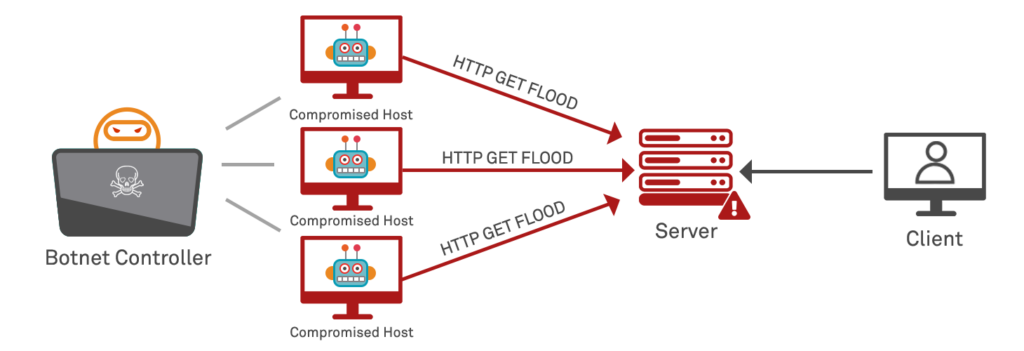

Slowloris was famously used in 2009 against Iranian government servers during protests related to the elections that year. Under slowloris attack, the pool of threads is consumed by the attacker and the service will deny connection attempts from legitimate users. Affected servers use threads to handle each concurrent connection, and have a limit on the total number of threads. It achieves this by opening as many connections to the target web server as it can, and holding them open as long as possible by sending a partial request, and adding to it periodically (to keep the connection alive) but never completing it.

It exploits a design approach of many web servers, allowing a single machine to take down another machine's vulnerable web server with minimal bandwidth. Slowloris is a type of denial of service attack that operates at Layer 7 (the application layer), and does not require many resources on the part of the attacker. bandwidth, CPU, memory) or causing it to crash.
#APACHE PREVENT SLOWLORIS ATTACK HOW TO#
You should have already uploaded your SSH keys to the portal and know how to log in to a node with those keys.ĭenial-of-service (DoS) attacks aim to block access by "legitimate" users of a website or other Internet service, typically by exhausting the resources of the service (e.g. To reproduce this experiment on GENI, you will need an account on the GENI Portal, and you will need to have joined a project. Users of GENI are responsible for ensuring compliance with the GENI Resource Recommended User Policy. Take special care not to use this application in ways that may adversely affect other infrastructure. This experiment involves running a potentially disruptive application over a private network, in a way that does not affect infrastructure outside of your slice. This experiment should take about 60 minutes to run. This experiment highlights the difficulty associated with mitigating a denial of service attack, without affecting legitimate users. This experiment explores slowloris, a denial of service attack that requires very little bandwidth and causes vulnerable web servers to stop accepting connections to other users.
#APACHE PREVENT SLOWLORIS ATTACK WINDOWS#
NOTE: This question is for Apache servers as it is my understanding that Windows IIS servers are not affected.Menu Layer 7 DoS attack with slowloris Fraida Fund Has anyone on ServerFault been experiencing attacks such as this? If so, what measures did you implement to defend/prevent it?

Using mod_evasive to limit the number of connections from one host and use mod_security to deny requests that look like they were issued by slowloris seem to be the best defence so far. One other report indicates that using a reverse proxy (such as Perlbal) in front of the Apache server can help prevent the attack. This of course does nothing more than increase the requirements for the attacker's computer and does not actually protect the server 100%. The best solution we have determined (so far) is to increase MaxClients. The basic concept of what slowloris does is not a new attack but given the recent attention I have seen a small increase in attacks against some of our Apache websites.Īt the moment there does not appear to be any 100% defence against this. Recently a script called "slowloris" has gained attention.


 0 kommentar(er)
0 kommentar(er)
